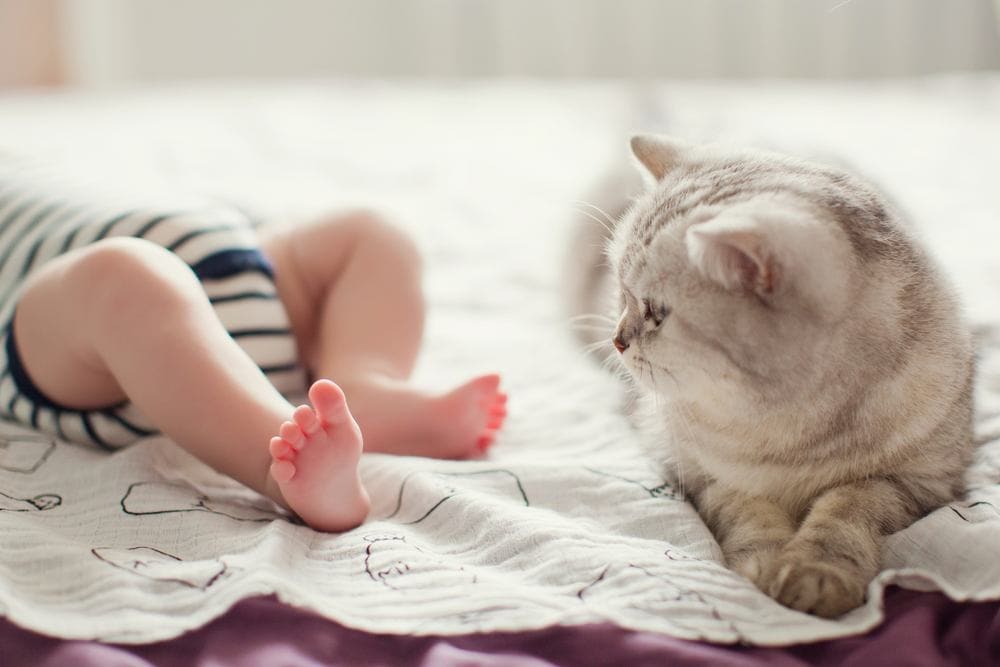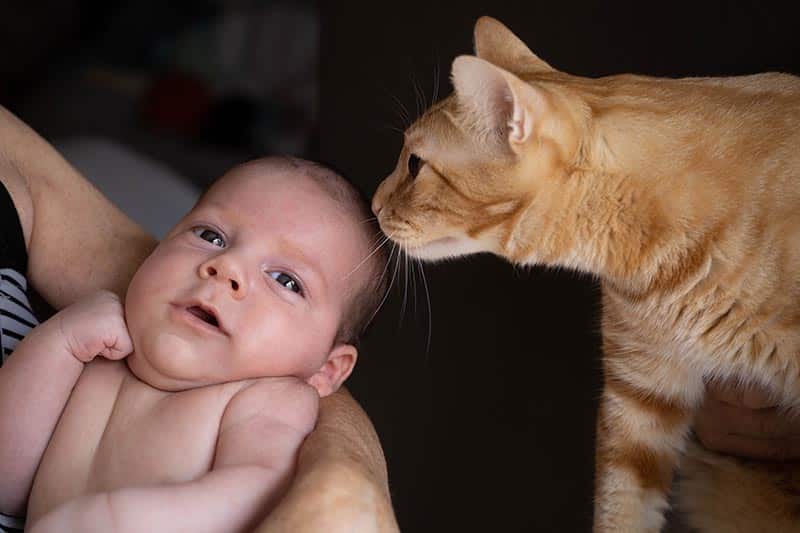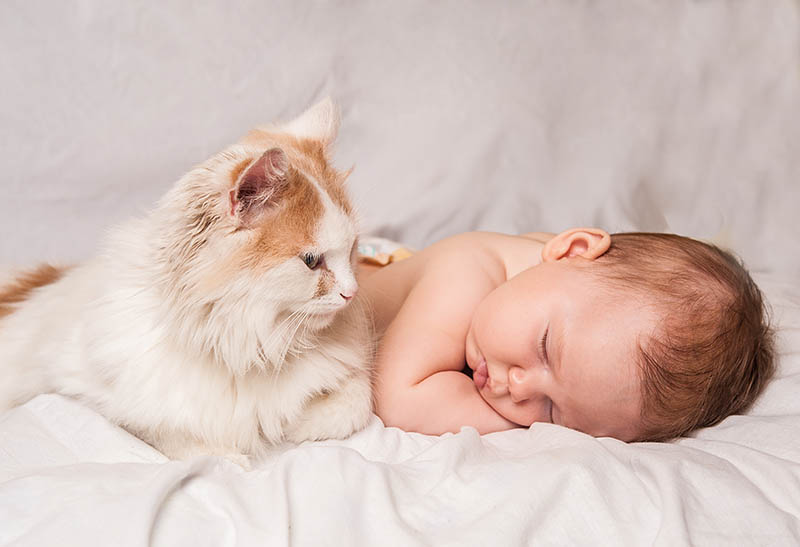Cats are peculiar creatures; some are curious and friendly and want to be near you, while others retreat to their favorite lounging spot with no desire to be bothered. Some cats tolerate noise, while others hate the sound of screaming kids and chaos. But what about babies? Can cats tell what a human baby is?
Because cats are curious creatures, it seems they can tell what a human baby is based on their reactions. Read on to learn more.
Can Cats Tell What a Human Baby Is?
Unfortunately, little research supports the theory that cats know what a human baby is. We can only base the theory on cats wanting to get into cribs with babies and being curious about them when they come home from the hospital.
Cats love warmth and comfort while sleeping, and a baby provides that in the crib. Some cat owners have stated that their cats are much more patient with their babies and seem to be more delicate in the baby’s presence.
Babies smell differently1 than adults, and they tend to smell like milk and dirty diapers, which will undoubtedly cause a cat to investigate. You can keep the baby and cat visits short until your cat is comfortable. Be sure to pet your cat (if they like it) and give them plenty of love while near the baby to keep jealousy issues at bay.


Will My Cat Suck the Breath Out of My Baby?
Most cat parents have heard the myth about cats sucking the breath out of a baby1. The myth is just as preposterous as black cats being bad luck. Nonetheless, cats have an incredible sense of smell, and the smell of a baby’s milky breath will probably draw the cat near, even if the baby is in the crib.
A cat may lie near or across a baby’s chest to get a whiff, but that doesn’t mean they’re sucking the breath from the baby; they’re only curious. However, never leave the cat and baby alone in the crib. Always supervise1 to ensure the cat is not accidentally suffocating the baby.
How to Introduce Your Cat to a Newborn Baby
For starters, you’ll be adding new items to your home before the baby arrives, and it’s a good idea to let your cat smell and investigate1 them before the baby comes home. Cats love routine and predictability, and the newly added items in the home may initially cause your cat a little stress. After a while, your cat will acclimate to them, which can make the introduction a little easier.
Once home with the baby, set aside quiet time with just you, the baby, and your cat. Let your cat smell the baby and the blankets or clothes. Ensure the room is quiet and stress-free.
Before the baby arrives, it’s an excellent idea to get your cat used to hearing the cries of a newborn. Play audio clips of gurgling sounds, baby cries, and cooing to get your cat used to the sounds. This will help when the baby is present.
With time and patience, your cat will get used to the baby, but always supervise your cat and baby when together, especially in a crib. For safety, do not let the cat lie in the crib with the baby unless you are in the room. Otherwise, close the door to keep the cat out during the baby’s nap time.

Tips for Keeping Your Cat Healthy & Safe
Always supervise your cat with the new baby. Your cat may get jealous, but if you follow the advice mentioned above, you should have pleasant results. Keep up with your cat’s needs, even though your hands are full with the new baby. Also, be sure to keep the litter box clean and allow your cat an area to retreat to if the baby’s cries get to be too much.
Continue to give your cat the love they’re used to, and feed a healthy, complete, and balanced diet. Don’t forget to provide fresh water for your cat at all times as well!
Conclusion
Bringing home a new baby is an exciting time, and if you have a cat, it doesn’t mean it should be a stressful time. As we’ve mentioned, there is no conclusive research on whether cats know what a human baby is, but it seems likely based on reactions, curiosity, and smells. In the end, cats and babies can live together harmoniously.
See Also:
- Can My Cat Tell When I’m Naked? Here’s What They Think
- Do Cats Think We Are Cats, Only Bigger? How Felines Perceive Us
Featured Image Credit: Sharomka, Shutterstock











